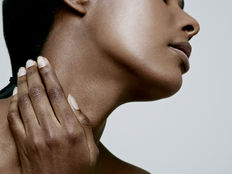
Adult Articulation, Lisp & R-Sound
Articulation therapy for adults.
At SpeechAppeal, our Speech-Language Pathologists work with adults who want to refine specific sounds—most often the “s” sound (lisping) or the “r” sound—that may impact clarity, confidence, or professional presence.
While these patterns are often targeted in childhood, many adults continue to experience them into their adult lives and careers. For some, this leads to frustration when asked to repeat themselves, anxiety in presentations or interviews, or simply a desire for speech that feels more polished.
What is a Lisp?
A lisp happens when the tongue is placed in a way that changes how “S” and “Z” sound. Common examples include:
-
Frontal lisp: “S” sounds more like “th” (e.g., “sun” → “thun”).
-
Lateral lisp: Air escapes along the sides of the tongue, making speech sound “slushy” or “wet.”
Lisps are normal in young children, but if they persist into adulthood, they often won’t resolve without targeted therapy.
Why is “R” so difficult?
The R sound is one of the most complex in English. It requires precise tongue placement, lip tension, and shaping of the vocal tract. Adults who struggle with “R” may:
-
Replace it with “W” (e.g., “red” → “wed”)
-
Drop it at the end of words (e.g., “car” → “cah”)
-
Produce a sound that feels close, but not quite accurate
Because “R” is so common, difficulty with it can stand out in both casual and professional communication.
Why does this matter?
Unclear sounds can:
-
Make you feel self-conscious when speaking
-
Lead to misunderstandings
-
Create extra effort in conversations, presentations, or interviews
Adults often seek therapy when they want their speech to reflect their knowledge, confidence, and personality without distraction.
Our Approach
We take an adult-focused, personalized approach to sound refinement. Unlike generic drills, sessions integrate real-world communication practice so changes transfer beyond the therapy room. Depending on your goals, we may focus on:
-
Correcting production of the “s” or “r” sound in structured and spontaneous speech
-
Strengthening clarity in professional contexts (presentations, interviews, meetings)
-
Reducing effort and tension while speaking
-
Increasing awareness of sound placement and oral posture
-
Building strategies to prevent old patterns from resurfacing
-
Enhancing overall communication confidence and ease
At SpeechAppeal, therapy is practical, supportive, and individualized. We:
-
Assess how you’re currently producing the sound
-
Break down exactly what’s happening with tongue, lips, and airflow
-
Use step-by-step motor learning strategies to build accurate, consistent productions
-
Transfer new skills into everyday conversation so they “stick” outside of practice
Our goal isn’t just “correct” sounds; it’s communication that feels natural and less effortful.
Adult-Focused Learning
Our programs are built around the realities of adult life. We focus on:
-
Efficiency: Targeting only the sounds that matter most for your clarity.
-
Skill Transfer: Moving quickly from drills to spontaneous conversation and professional speaking tasks.
-
Awareness & Self-Monitoring: Helping you recognize when patterns appear so you can adjust in real time.
-
Personalization: Integrating your goals, whether that’s workplace communication, social confidence, or public speaking.
Frequently Asked Questions
Who is eligible? Adults who are present in Ontario at the time of their virtual appointments are eligible for services. Exceptions for teens aged 15+ may be considered on a case-by-case basis. Please email admin@speechappealclinic.com to inquire. Do I need a referral? No referral is required. You can book directly, starting with a Free Online Meet-and-Greet or an Intake Session to discuss your goals. Are sessions eligible for third-party insurance reimbursement? All clinicians at SpeechAppeal are registered Speech-Language Pathologists, so services are eligible for submission to third-party or private insurance. Please check with your provider for coverage details and requirements. How long will it take? Program duration varies based on your goals, current skill level, and consistency of practice. Many clients start with an initial trial of 6 weekly or bi-weekly sessions. Will I be assigned exercises? Yes. You will receive tailored exercises and practice activities to reinforce skills, improve efficiency, and help you apply techniques in real-world situations. Are sessions online or in-person? All sessions are delivered online using secure, easy-to-use platforms. In-person sessions are not offered. Time Commitment & Budget Considerations We understand that time and budget are important factors. Our programs are designed to be efficient while remaining highly individualized. Program length depends on your current skill level, time available for practice, and real-life application opportunities. If you have limited time, we can focus on 1–2 high-impact targets. Some clients begin with a specific goal and return later to refine additional skills. Email admin@speechappealclinic.com to ask about our group sessions for a more time-efficient option. Rates Session rates vary by service type. All rates are available on our online booking calendar.















